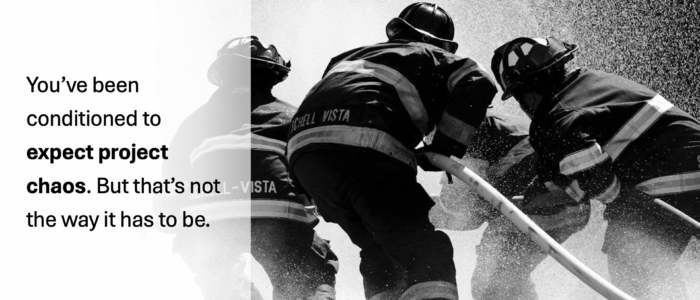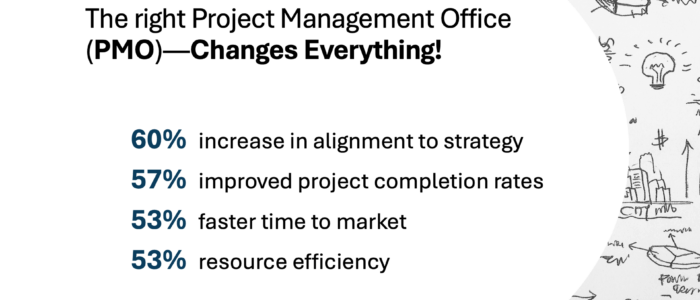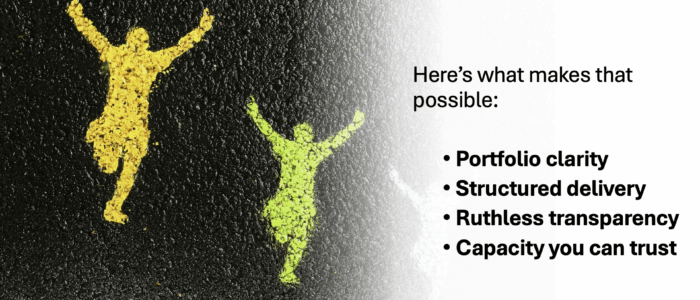Most executive leaders don’t get to feel what a real project management office (PMO) can do. They get the opposite: noise, drama, confusion, and constant escalations. It becomes background radiation—something you learn to live with.
But you shouldn’t have to.
We’ve worked with organizations where the PMO became the most boring part of the business—and that was a good thing. Work moved forward. Issues got surfaced and solved. Leaders spent more time setting direction and less time fighting fires.
The difference wasn’t heroic effort. It was the system.
The Mess Most Teams Live With

You don’t need a maturity assessment to spot it. You can feel it.
- Projects keep getting reprioritized mid-flight
- Teams are overloaded, but nobody can prove it
- PMs spend more time reporting status than managing work
- Executives ask for data that should already be in front of them—but what they really want is insight
- Everything takes too long—and no one can say why
People assume this is normal. It’s not. It’s just common.
What a Real PMO Delivers
Here’s the required shift: A PMO isn’t a reporting function. It’s an execution system. One that can absorb change, identify risk early, and keep everything moving in alignment to strategy.
When it’s built right, you stop needing heroics. You stop running on adrenaline.
Instead, things feel… manageable.
- Weekly updates don’t require digging through emails to figure out what happened
- Risks are visible before they’re painful
- Resource plans hold up because they are negotiated, not made up
- Executive sponsors get to focus on decisions that move the needle
- Execution stays aligned without constant intervention
We’re not talking about perfection. We’re talking about rhythm. A PMO that runs like a steady drumbeat—clear, predictable, and adaptive.
You Don’t Need to Build It Alone

Most teams we meet aren’t starting from zero. They’ve got smart people doing good work. What’s missing is the connective tissue. The habits, tools, and delivery structures that pull everything into one flow.
That’s what we help build. Not dashboards. Not decks. A system that lets leaders breathe easier because execution doesn’t fall apart when they look away.
If your PMO vanished for a week, would anyone notice?
In a well-run organization, the answer is: maybe not. Because the system keeps running. And that’s what a PMO should feel like.
Want to share this message with your team?
Download the companion carousel from our LinkedIn series: “What a PMO Should Feel Like.”
Use it in meetings, forward it to peers, or start a conversation about what your PMO could become.












3 thoughts on “What a PMO Should “Feel” Like”
Comments are closed.